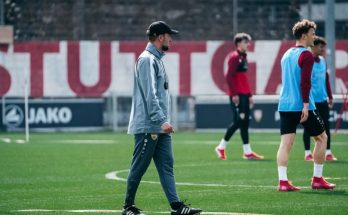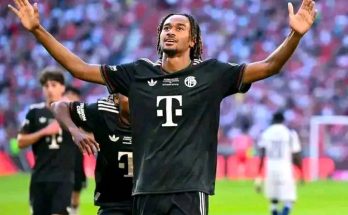**The Power of Unity: A Moment of Prayer in the Midst of Adversity**
During a recent NFL preseason game between the Detroit Lions and the Atlanta Falcons, an unsettling incident brought the competitive spirit of football to a standstill. Lions’ defensive back Morice Norris suffered a severe injury after being struck in the head during a play, leaving players, coaches, and fans in a state of collective concern. As medical personnel rushed to attend to Norris, who was eventually carted off the field in an ambulance, an extraordinary scene unfolded. Players from both teams, along with their coaches, gathered in a prayer circle at midfield, setting aside rivalry and competition to unite in hope for Norris’ recovery. This spontaneous act of solidarity was more than just a gesture—it was a reminder of the humanity that exists beneath the helmets and jerseys, transcending the game itself.
The incident occurred during what was otherwise a routine preseason matchup, a time when teams fine-tune their strategies and evaluate new talent. Preseason games are often seen as less consequential than regular-season contests, yet the intensity on the field remains high as players fight for roster spots. In the midst of this competitive atmosphere, Norris’ injury served as a stark reminder of the physical risks inherent in football. The hit that left him motionless on the turf was a jarring moment, one that silenced the crowd and shifted the focus from the scoreboard to the well-being of a fellow athlete.
As medical staff worked diligently to stabilize Norris, the reactions of those on the field spoke volumes. Teammates knelt in silence, some with hands on their heads, while opponents stood by with visible concern. The decision to suspend the game was immediate, underscoring the priority of player safety over the continuation of play. But what followed was even more profound. Without any orchestration, players from both teams began to converge at midfield, forming a circle and bowing their heads in prayer. Coaches joined in, and for several minutes, the stadium—usually a cacophony of cheers and chants—fell into a respectful hush.
This moment of unity was not just about religion; it was about shared humanity. Football, like all contact sports, carries an inherent risk of injury, and players understand this reality better than anyone. They train together, compete fiercely, and, in moments like this, recognize their vulnerability. The prayer circle was a spontaneous expression of empathy, a collective plea for Norris’ health that transcended team allegiances. In a league where rivalries run deep and competition is fierce, this display of solidarity was a powerful testament to the bonds that connect players beyond the game.
The NFL has seen its share of injuries, some of which have sparked debates about player safety and the long-term effects of the sport. Concussions, spinal injuries, and other serious conditions have led to rule changes, improved protocols, and increased awareness about the physical toll of football. Yet, despite these advancements, the reality remains that injuries can and do happen. What sets this incident apart is not just the severity of the injury but the response it elicited from those on the field. In a world where athletes are often seen as invincible, moments like this humanize them, reminding fans and spectators alike that beneath the pads and helmets are individuals with families, dreams, and fears.
The reaction on social media was immediate and overwhelmingly supportive. Fans from both teams, as well as neutral observers, praised the display of sportsmanship and compassion. Many noted how rare it is to see such a unified response in professional sports, where the stakes are high and the pressure to win can overshadow everything else. The prayer circle became a symbol of hope, not just for Norris’ recovery but for the idea that even in the most competitive environments, humanity can prevail.
This incident also raises broader questions about the role of sports in society. Football, for all its intensity and physicality, has the power to bring people together in ways few other things can. The camaraderie among players, the shared experiences of triumph and adversity, and the collective emotions of fans create a unique sense of community. In moments of crisis, that community often reveals its strongest bonds. The prayer circle was not just about the players on the field; it was a reflection of the values that sports can instill—respect, empathy, and unity.
Of course, the aftermath of such an event is just as important as the moment itself. Norris’ condition and recovery will be closely followed, and the support from his teammates, opponents, and the broader NFL community will undoubtedly continue. The league, too, may use this as another opportunity to reinforce its commitment to player safety, ensuring that every possible measure is taken to prevent similar incidents in the future. But beyond the policies and protocols, the memory of that prayer circle will linger—a reminder that in the face of adversity, the sports world can come together in remarkable ways.
In the end, the story of this preseason game will not be about the final score or standout performances. It will be about a moment when competition took a backseat to compassion, when players from opposing teams stood together in solidarity. It serves as a powerful example of what sports can be at their best—a platform for unity, resilience, and hope. As Morice Norris begins his journey toward recovery, he does so with the knowledge that an entire league, and countless fans, are rooting for him. And in that, there is something truly inspiring.
The NFL is often celebrated for its athleticism, strategy, and entertainment value, but it is moments like these that reveal its deeper significance. Football is more than just a game; it is a microcosm of life itself, with all its challenges, uncertainties, and opportunities for connection. The prayer circle on that field was a fleeting moment in the grand scheme of a long season, but its impact will endure. It was a reminder that no matter how fierce the competition, there are things far more important than winning—things like health, compassion, and the unbreakable bonds of shared humanity.



